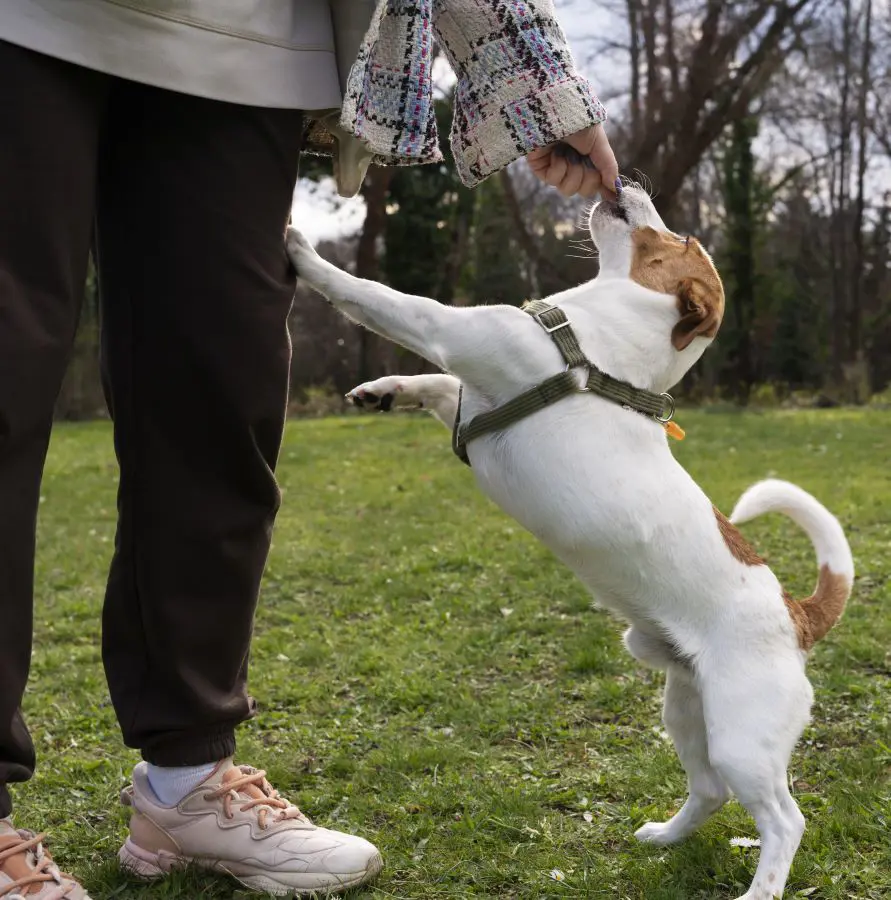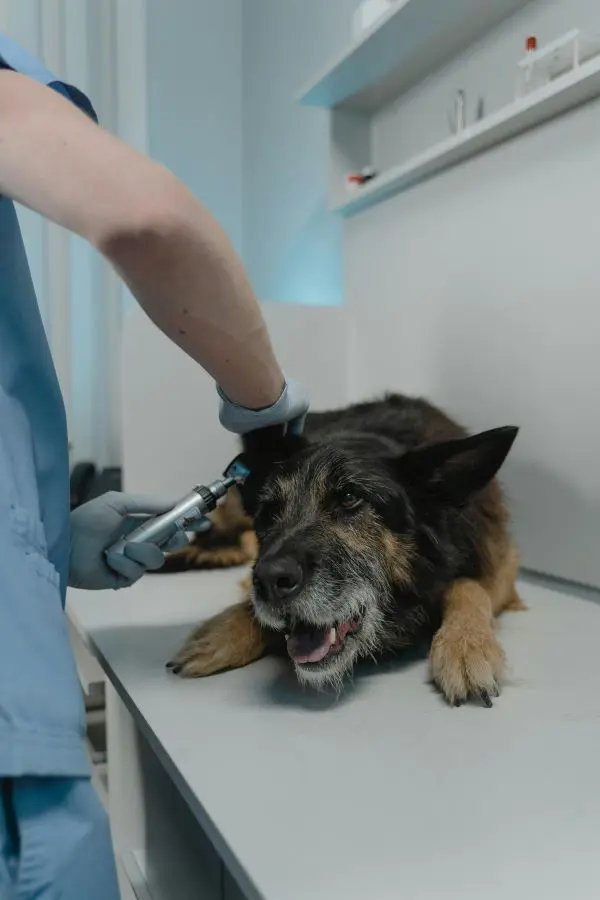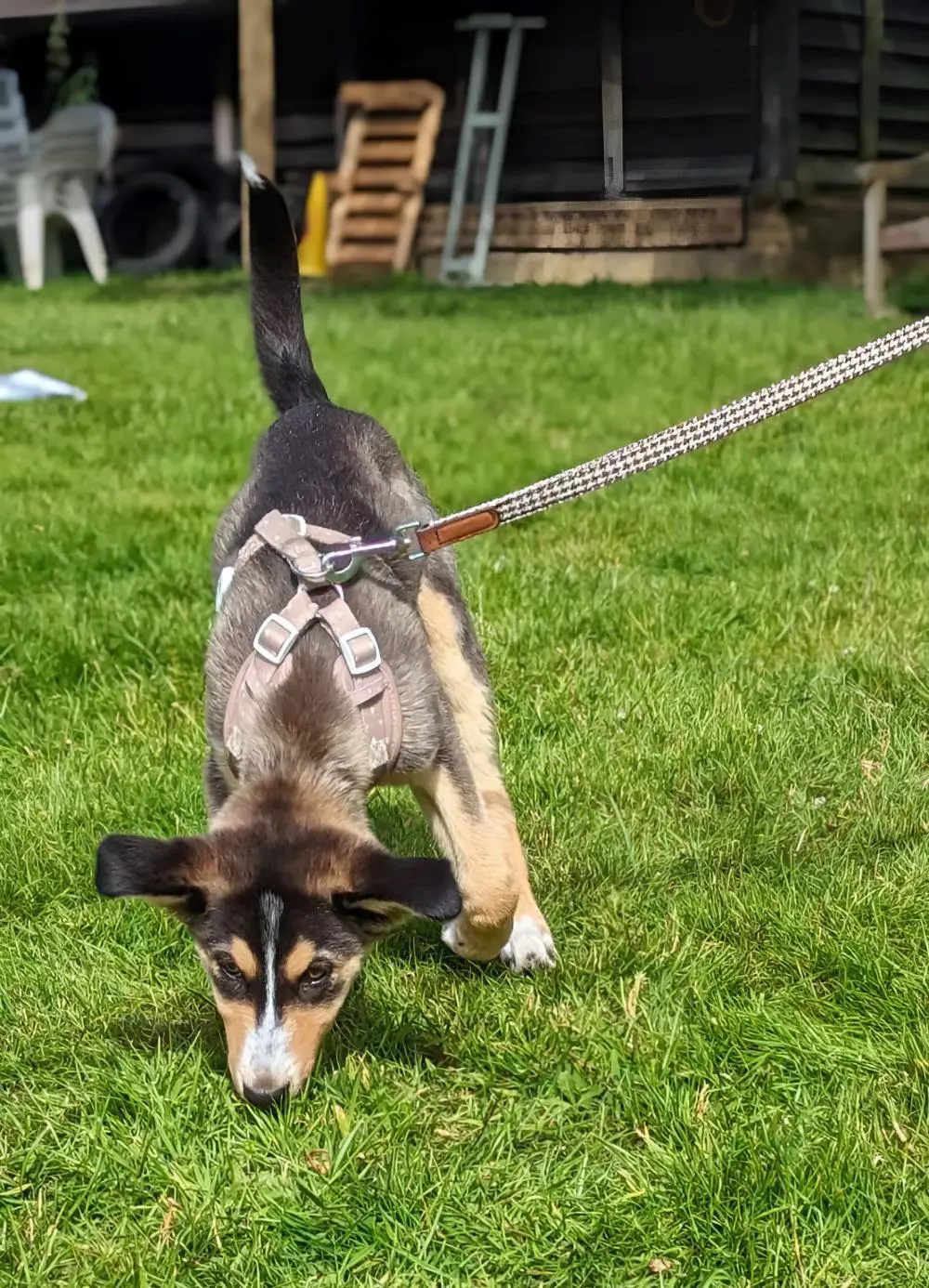15 Reasons On Why Is Your Dog Whining So Much

Canine whine can both endear and annoy dog owners. But have you ever wondered why your furry friend resorts to this vocal expression? From expressing their needs to communicating their emotions, a dog's whine can reveal a wealth of information about their inner workings.
In this article, we'll delve into the most common reasons why dogs whine. By shedding light on their unique forms of communication, we aim to empower you with the knowledge to better understand and respond to your four-legged companions.
1. Excitement
When a dog feels excited, they may let out a high-pitched, repetitive whine accompanied by energetic body language, such as wagging tails, jumping up, and general vitality. This type of whining is particularly common when a dog is greeting their owner after being away, as they associate the owner's return with joy and companionship.
Similarly, it may also occur when a dog anticipates something positive, like being fed, going for a walk, or playing with a toy. To recognize exciting whining, it's important to pay attention to your dog's body language and the context in which the whining occurs. If your dog starts whining when you grab their leash or open a bag of treats, it's likely an exciting response.
Additionally, excitement whining tends to be more high-pitched and frequent compared to whining for other reasons. Responding calmly and positively can reinforce appropriate excitement behaviors and help your dog learn to express their emotions healthily.
2. Anxiety Or Fear
Dogs might start whining to show distress because of anxiety or fear. This can happen because of loud noises, new places, or being away from their owners. Along with whining, they might also walk, shake, or hide.
To know if the dog is whining due to anxiety or fear, watch for other signs like cowering, avoiding eye contact, or trying to run away. If the whining goes on and the dog looks upset they are likely anxious or scared.
To help a winning dog, stay calm and comforting. Further, give them treats, pet them, or just stay close to make them feel secure. Sometimes, you might need to move them away from what's causing the stress or try calming methods like soothing music or special diffusers.
3. Boredom

If your dog is whining along with behaviors like pacing, chewing on inappropriate items, or excessive barking, they may be whining due to boredom as they look for ways to entertain themselves. The whining typically occurs when the dog doesn't have anything to do, like after playtime ends or when left alone for long periods.
Dogs whine when bored because it's an effective way to get a response from their owners, as groaning draws attention and often leads to the dog getting what they want, whether that's playtime, a walk, or just some petting.
Boredom whining is common in high-energy dog breeds that need lots of physical and mental exercise to stay happy and well-behaved. To prevent it, ensure your dog gets enough daily exercise, provide interactive toys and chews for when they are alone, and give them regular opportunities for training and playtime with you.
4. Hunger Or Thirst
When a dog is hungry or thirsty, they may begin to whine more persistently and urgently, often accompanied by other behaviors like pacing, circling, or even trying to lead their owner to their food or water bowl. The whining may become more frequent and intense as the dog's need for sustenance or hydration becomes more pressing.
To tell if a dog is whining because it's hungry or thirsty, watch for certain behaviors. If the whining comes with sniffing around its food or water, licking its lips, or acting restless and anxious, these are signs it's asking for food or water.
Additionally, if the whining stops once the dog has been fed or given water, it's a clear sign that the whining was a response to their physiological needs.
5. Feeling Cold Or Hot
Your dog will start whining when they are feeling uncomfortably cold or hot because this is a way of communicating their discomfort and seeking relief. When a dog is too cold, they may start shivering or trembling, and their whining may have a higher-pitched, more urgent tone.
In contrast, when a dog is too hot, their whining may be accompanied by panting, restlessness, and attempts to find a cooler spot. In both cases, the dog's whining is a way of letting their owner know that they need help regulating their body temperature.
To address this, you can provide your dog with a warm, cozy bed or blanket if they are cold, or move them to a cooler, well-ventilated area if they are overheating.
6. Seeking Comfort Or Cuddles

When dogs whine for comfort or cuddles, they express their need for affection and companionship. This whining is usually gentle and sad and is often accompanied by the dog nudging, leaning against, or pawing at their owner. They are seeking physical contact and reassurance from their trusted human.
To identify this type of whining, look for relaxed body language, soft eyes, and a wagging tail. By responding with the affection they crave, you can strengthen your bond with your dog and help ease any anxiety or insecurity they might feel.
7. Stress
Dogs also whine in stress because they want to show their discomfort and seek comfort. Stress can come from changes in routine, new environments, or interactions with other animals or people.
When a dog is stressed, their winning might sound different, for instance, high-pitched, hopeless, or desperate. They might also pant, pace, tremble, or try to hide or escape. To tell if a dog is whining from stress, look at their body language. Signs include a tense posture, ears pulled back, a tucked tail, avoiding eye contact, or avoiding the source of stress.
To help a stressed dog, stay patient and understanding. Create a calm environment, offer gentle petting, or engage in calming activities. Sometimes, you may need to remove the dog from the stressful situation or consult a vet or animal behaviorist for further help.
8. Need To Go Outside
One common sign is circling or pacing near the door they usually go out, as if trying to lead you there. They may also sniff around the floor near the door or stand by it, waiting for you to notice.
Some dogs will even sit or stand by their leash as if asking to be taken out. The whining itself may have a more urgent, high-pitched tone compared to whining for attention or other reasons.
If your dog is whining and showing any of these behaviors, it's a good indication they need to relieve themselves outside. So, reacting promptly by taking them out can prevent accidents and reinforce that whining is an effective way to communicate their needs.
9. Attention Seeking

Another reason for whining is if they seek attention from their owners, and this type of whining is usually accompanied by other behaviors like pawing, jumping, or even barking. When a dog is whining for attention, they may follow you around the house, sit or stand close to you, or even try to climb onto your lap.
Likewise, if you ignore their demands, the whining might get louder or more persistent. To handle attention-seeking whining, it's important to ignore it and only give your dog attention and affection when they're calm and quiet.
In addition, providing plenty of exercise, mental stimulation, and quality time with you can also help reduce the need for attention-seeking behaviors.
10. Greeting Behavior
Dogs often whine when greeting their owners or other people due to excitement and happiness. This type of whining is a way for dogs to show how much they've missed their loved ones.
When a dog greets someone they like, their whining is usually paired with behaviors like tail wagging, jumping, bowing, and an open-mouthed "smile." They may start groaning as they dance with their paws and continue expressing joy.
Greeting whining is communicated in social and affectionate dogs who are thrilled to reunite with their favorite people. This vocal communication shows their happiness and strengthens the bond with their owners.
Though greeting whining can be loud and persistent, it's not a concern. Instead, it reflects the strong connection between a dog and its owner.
11. Age-Related Issues
As dogs age, they may start whining more frequently due to different age-related issues, such as cognitive decline leading to disorientation and anxiety, gradual hearing loss causing them to whine to get attention, pain, and discomfort from arthritis or dental problems, and increased separation anxiety when left alone.
If an old dog is whining, it's crucial to look for other signs like confusion, pacing, staring into space, or accidents in the house, which can indicate cognitive decline, while hearing loss may cause them to startle easily or not respond to commands.
To help an older dog with grumbling, provide pain medication if necessary, use positive reinforcement training, offer mental stimulation, and create a safe and comfortable environment. Also, have a vet check for any underlying health problems.
12. Digestive Problem

The dog keeps crying if it has digestive issues, which can show through signs like vomiting, diarrhea, loss of appetite, or abdominal pain. This type of whining may sound more distressed or pained compared to whining for other reasons.
Plus, a dog may also assume a hunched posture, tuck their tail, or avoid being touched around their belly. Digestive issues can be caused by food allergies, pancreatitis, inflammatory bowel disease, or even obstruction.
If your dog is whining and showing any of these symptoms, it's essential to have them examined by a vet to determine the underlying cause and provide appropriate treatment. And, providing a bland diet and plenty of water can help soothe an upset stomach.
13. Territorial Behavior
If your dog is whining due to territorial behavior, you may notice other simultaneous behaviors that signal their desire to protect their perceived domain. These dogs may exhibit aggressive posturing, such as standing tall with hackles raised, direct eye contact, and low, rumbling growls when strangers or other animals approach their territory.
Also, they may engage in more clear defensive actions like barking, lunging, or even biting to ward off perceived violators. Territorial whining often has a more rough, insistent quality compared to whining for attention or other needs.
Additionally, you may observe your dog patrolling the boundaries of their territory, marking with urine, or refusing to allow others to access certain areas of your home or yard.
14. Saying Sorry
Dogs may whine to apologize or show remorse, especially if they've done something wrong like chewing on furniture or jumping on guests. When dogs whine in this way, it can be seen as their way of saying sorry or seeking forgiveness from their human companions.
This type of whining usually comes with submissive body language, like lowered ears, a tucked tail, and avoiding eye contact. Dogs use whining and these behaviors to express regret and a wish to make things right after their actions.
15. Alerting About Something
Lastly, dogs whine to alert their owners about something they perceive as a potential threat or something that requires attention. When a dog whines due to an alert, they may also exhibit other behaviors like barking, pacing, or staring intently at the source of their concern.
For example, if a dog whines while looking out the window, they may have spotted something unusual outside that has caught their attention. If a dog whines while standing by their food bowl, they may be alerting their owner that they are hungry. In these cases, the dog is trying to communicate with their owner and draw their attention to the issue.
How to stop a dog from whining

Here are some tips and tricks to help you address your dog's whining effectively, ensuring a happier and more peaceful environment for both you and your canine companion.
What Causes Dogs to Whine
The first step in addressing whining is to identify the cause. Observe your dog's behavior and note any patterns or triggers that seem to set off the whining.
Provide Training and Boundaries
Training your dog to understand when whining is inappropriate is crucial. Use positive reinforcement techniques to reward quiet behavior and set clear boundaries.
Ensure Physical and Mental Stimulation
Regular exercise and mental stimulation are essential for keeping your dog happy and reducing unwanted behaviors like whining. Interactive toys, regular walks, and playtime can go a long way in keeping your dog content.
Consult a Professional
If your dog's whining is persistent and you've tried various methods without success, it might be time to consult a professional dog trainer or behaviorist. They can provide personalized advice and strategies tailored to your dog's needs.
Veterinary Check-Up
If you suspect your dog's whining is due to pain or a medical issue, don't hesitate to consult your veterinarian. A thorough check-up can rule out any underlying health problems.
Recent posts
Dogs
20 Haircut For Pomeranian Dog Breed
Pomeranians along with their lively personalities are also well known for their luxurious and dense fur. They are attractive, charming, and confident dog species that require proper care for their fur. There are several grooming styles for these dogs...
How To Get Rid Of Skunk Smell On Dog
Having to deal with a dog sprayed by a skunk is a nightmare, but there certainly is an appropriate course of action with which to remove such odors and make your canine fresh again. Skunk spray smells terrible and may cling to your dog's fur. Followi...
20 Best Shih Tzu Haircut
A Shih Tzu haircut alludes to several grooming manners intended to be in the breed’s extended, heavy coat. The hairstyle series ranges from short, Hessel-free trims like the Puppy Cut to more intricate styles like the Top Knot. The main goals o...
15 Reasons On Why Is My Dog Eating Grass
One of the most intriguing and frequently discussed habits of dogs is their occasional urge to munch on grass. This behavior is quite common and not as worrisome as some other items dogs might ingest. However, you might want to discourage your dog fr...
How To Groom Goldendoodle
Goldendoodles bring together two of the most beloved breeds, Golden Retrievers and Poodles, and are known to be extremely affectionate. Besides the satisfaction one gets from grooming, maintaining one's health and looks requires knowledge and a lot o...
How Can You Take A Dogs Temperature?
An increase in temperature may be a symptom of many health issues that, by right, one should know how to measure. By conducting regular checks for temperature, you provide yourself with an avenue to spot any potential problems before they become seve...






